CRAFTS & TEXTILES IN DHANAK
For thousands of years, people have been preserving cultural heritage in the form of traditional arts and crafts. The ethnic communities in India have a very rich tradition of keeping their art alive. For them, it is not just a source of income. Handicrafts are a cultural identity for these ethnic communities, and a reflection of their cultural history. Handicraft is about processing materials by hand with hand tools. The results can be helpful things or decorative things. The materials utilized in the product are natural, industrially processed or maybe recycled. The models of the product are ancient, revised traditional or fashionable. Handicraft is deeply frozen in society and contributes to preserving and sending traditions. In their product, crafters transfer an area of their cultural heritage in ideas, forms, materials and work ways, similarly as their own values, philosophy of life, fashion and self-image. Craftspeople, conjointly known as artisans, possess technical data of materials and work ways. They’re skilled employees whose profession relies on manual skills. Their main tools are the power of work strategies and their manual skills. Handicraft contains plenty of implicit data which grows every year, aboard with skills.
PRINTING
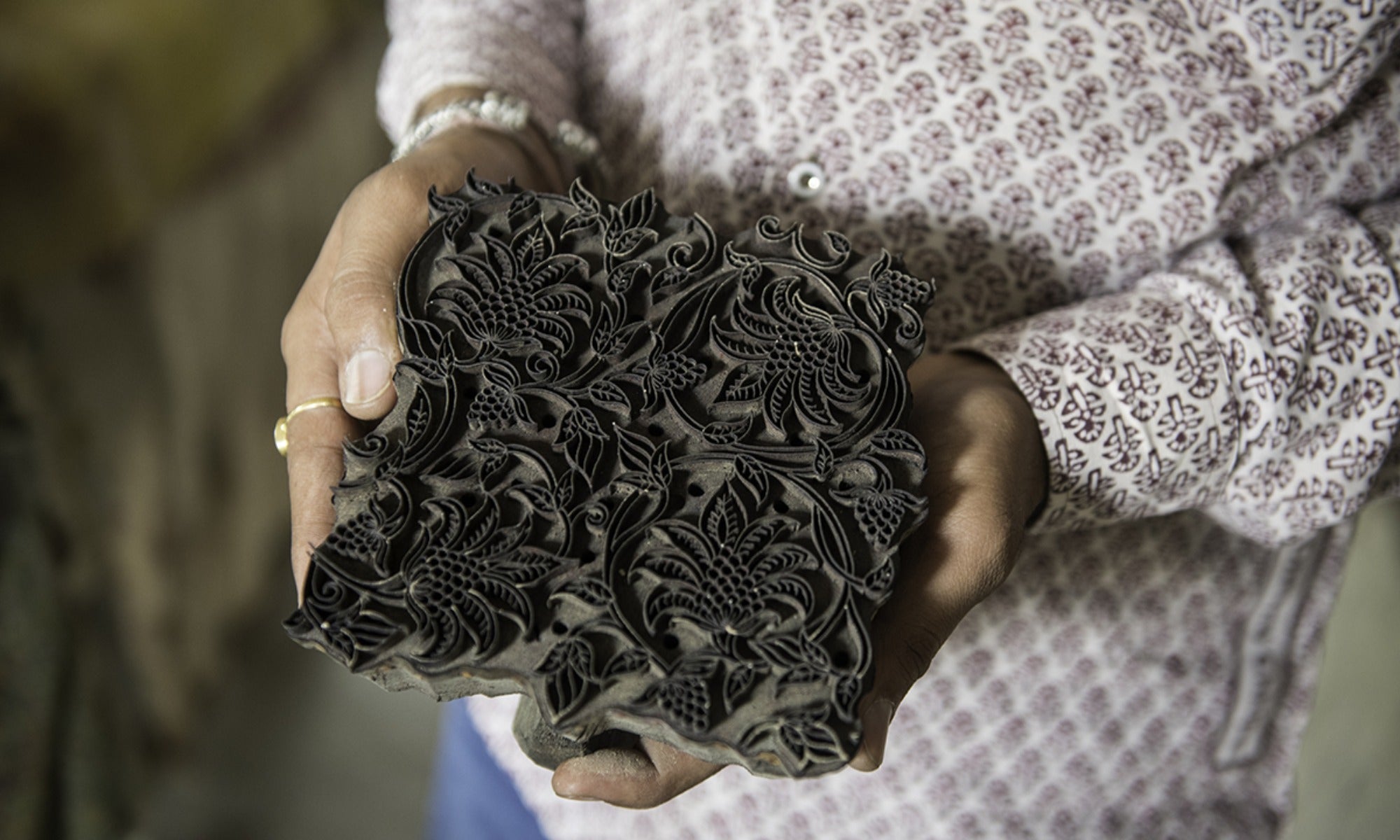
BLOCK PRINT
Block printing is the process of printing patterns by means of engraved wooden blocks. The recorded history of block printed fabrics dates back to the Indus Valley civilisation, around 3500 to 1300 BC. From the Harappan period onwards, the export of textiles, especially cottons. The Mughals introduced the intricate floral motifs that are still widely used in the hand block printed textiles from Rajasthan. Today, the art form is widely known and practiced in the states of Gujarat, Madhya Pradesh and Rajasthan.
Rajasthan has a long history of textile production, including hand block printing, and is home to a large number of skilled artisans who are proficient in the technique. The process of block printing is a tedious one—the blocks themselves require 10-15 days to be perfected. It all begins with a fabric that is first washed free of starch.

The next step sees the fabric pinned on the printing table. Meanwhile, the colours are prepared and kept on a tray containing glue and pigment binder to ensure a soft base for the colour, and to allow it to easily spread on the block.These blocks are made using woods such as teak, sycamore and pear, and are lovingly hand-carved in a myriad of intricate designs that are first made using chalk paste or a pencil on paper. Post this, they are soaked in oil for 10-15 days to soften the timber. Once the blocks are ready, they are dipped in the colour and then pressed on to the fabric. This process is repeated over and over again until the length of the fabric is complete. Precision is demanded by the artisans to ensure there are no breaks in the motifs. If there are multiple colours, other blocks are used and the artisan waits for the first print to dry first. The fabrics are left to dry in the sun, and then rolled in a newspaper to prevent them from sticking to each other.
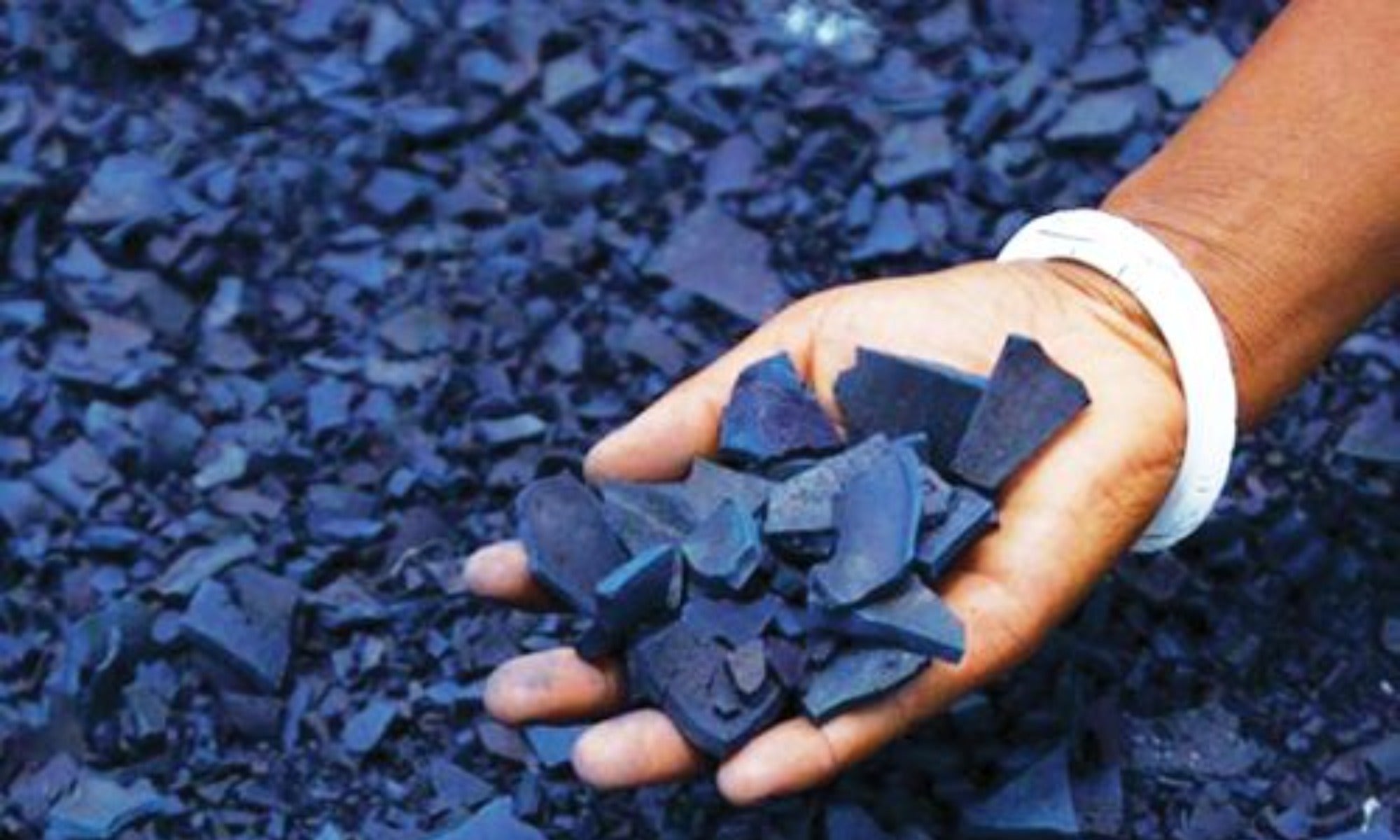
DABU PRINT
The verb “dabaana” which means to press, is where the name Dabu (or Dabboo) comes from. It is one of the most intriguing artisanal crafts that has been practiced in India for centuries, particularly in the districts of Rajasthan. The majority of practitioners of this craft are located in the Rajasthani cities of Akola, Udaipur, and Bagru. The art of dabu printing has a rich history and is passed down from one generation to the next. Dabu print fabric has its own charm and beauty that is recognized around the world.
The practice of Dabu print, almost died in the last century, but it was revived by artisans and today, it is a flourishing business across the globe.
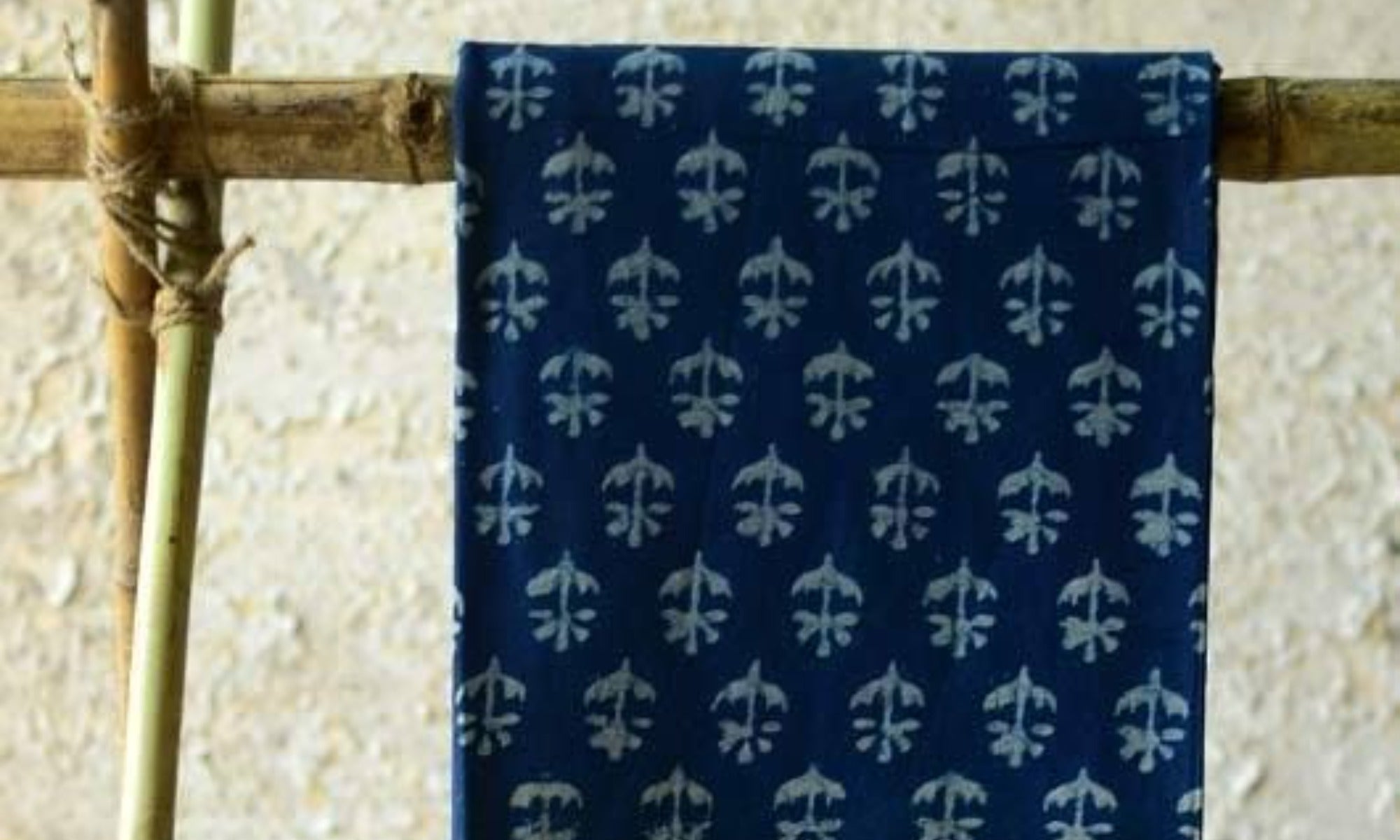
Final Dabu print on fabric looks very similar to Batik but the technique used is completely different. Dabu print is a combination of highly skilled labor and beautiful motifs. Dabu printing is a slow process but it yields artistic results. Rajasthan being the home to Dabu printing technique,the motifs used have a traditional approach to its existence.
Plain fabric is first washed to remove any impurities, which may interfere the dyeing process. Designs are then hand printed on the fabric using blocks dipped in fast dyes. After this, mud resist is used that makes this print so unique. After printing is done, the Dabu print fabric is spread in the sun, where it dries out. Next, the fabric is dipped in vat of dye, dried again and finally washed thoroughly to remove excess dye. Dyes used are typically natural.
HANDCRAFTED FABRICS
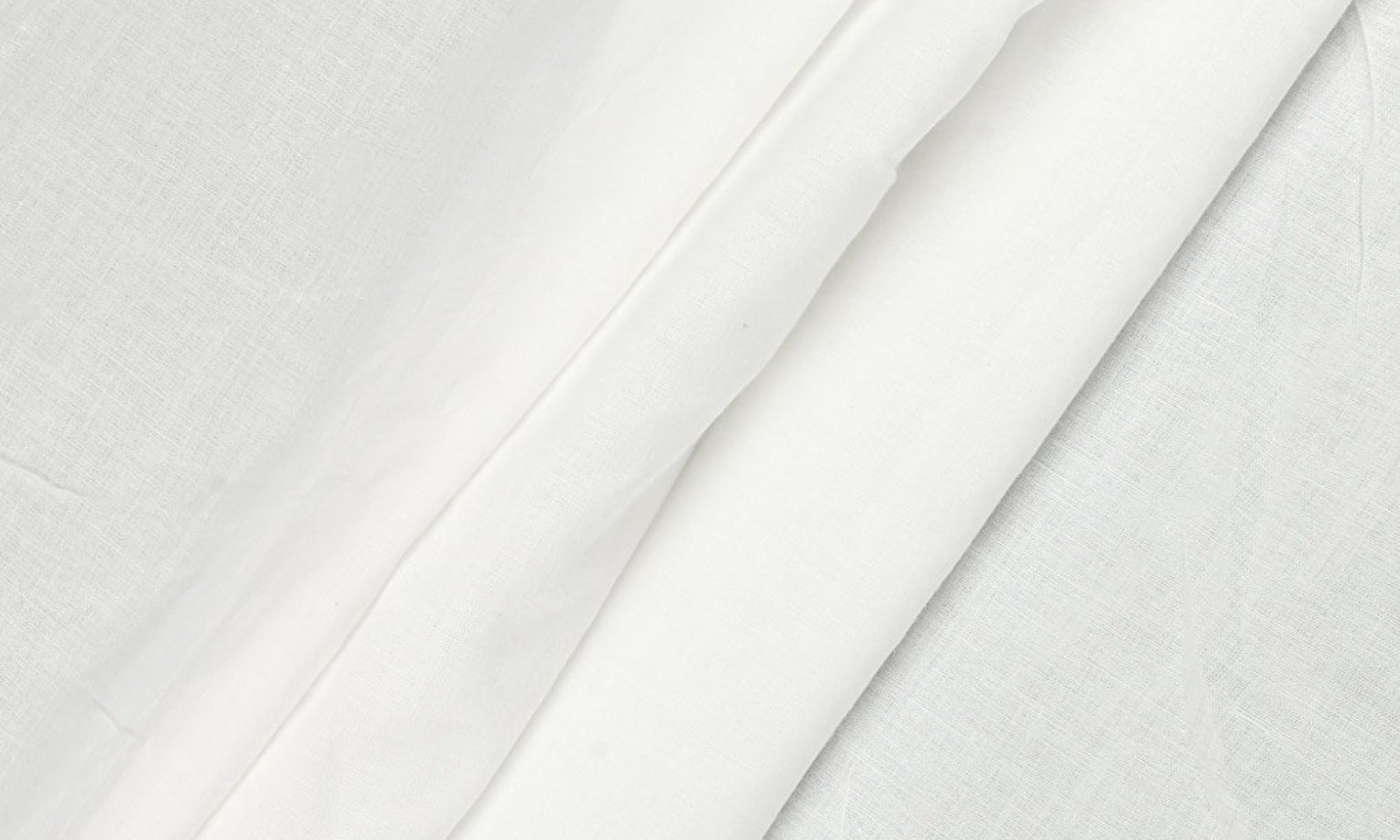
COTTON MUL
Mulmul is a soft and fine weave of cotton which is also known as muslin. Almost around 100 years ago when Bengali weavers first weaved it, Mulmul cotton fabric was one of the prized imports from India to the lands of England and Scotland. It started appearing in the market there and then gradually the countries of the continent started manufacturing it. Dhaka in Bangladesh, a part of India back then, was the first place where Mulmul was originated. During this time, when the trade of Mulmul was flourishing, the Britishers aggressively tried to repress it.
The production of Mulmul almost suffered for about two centuries. Gradually it got revived and now it is available easily. The fabric is super soft, lightweight and very breathable. It gets softer with every wash. It is easy to wash and easy to wear.
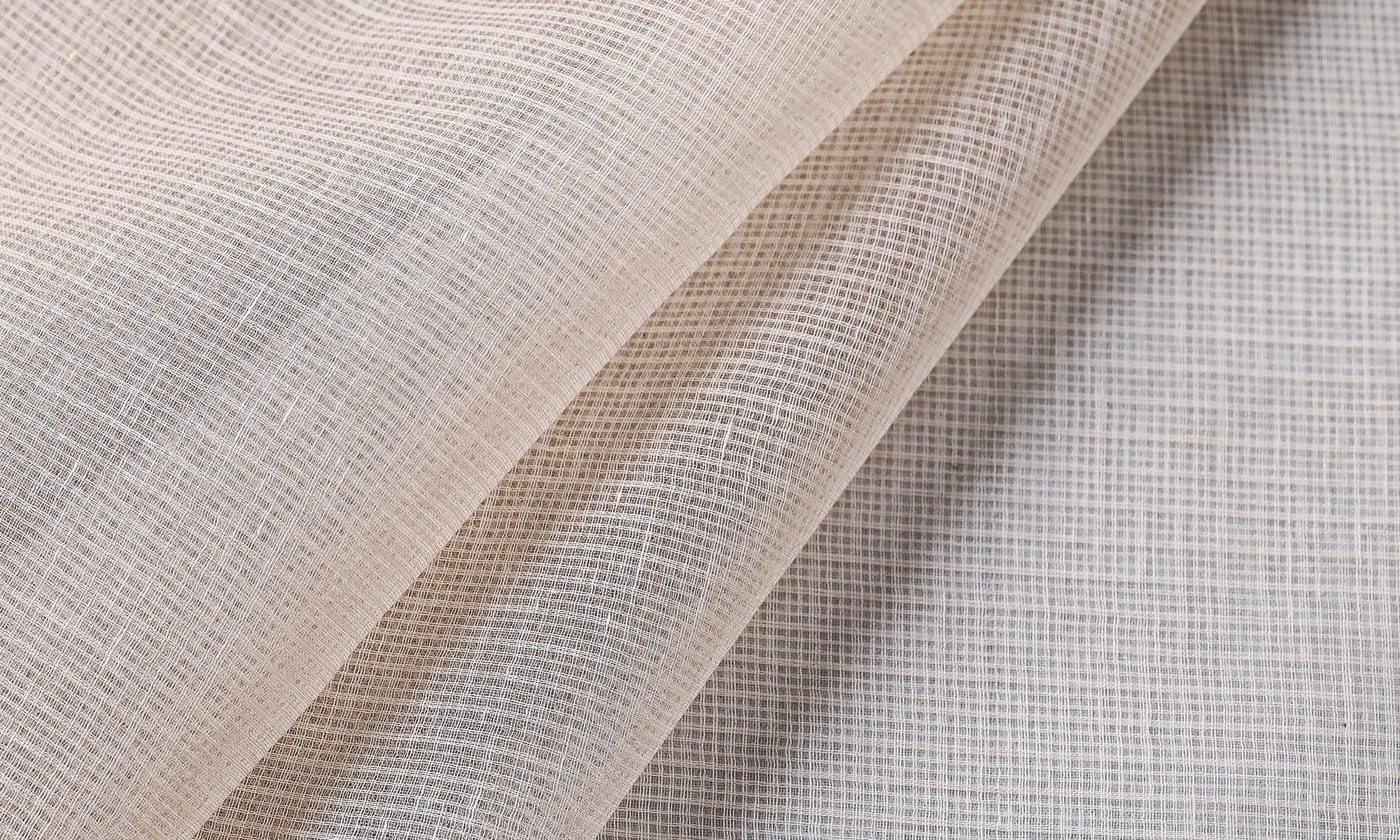
KOTA DORIA
Kota Doria fabric have square weave pattern which makes it one of the finest open weave fabric in India. The cotton, silk and zari(fine metal threads) yarns is woven on the pit loom that produces these patterns. It is an ideal fabric for summer. The thick and thin threads in regular intervals make lightweight open weave fabric. Kota Doria, as its name suggests, is woven mainly Kaithoon village (20 kms from Kota city) at Kota district of South East Rajasthan.
The distinguishing characteristics of the fabric is the square weave check pattern, known as "Khat'' by combination of thicker and thin yarn of cotton and silk. It makes ground fabric beside other fabric ornamentation. Hallmark and GI certification is awarded to the Kota Doria fabric.
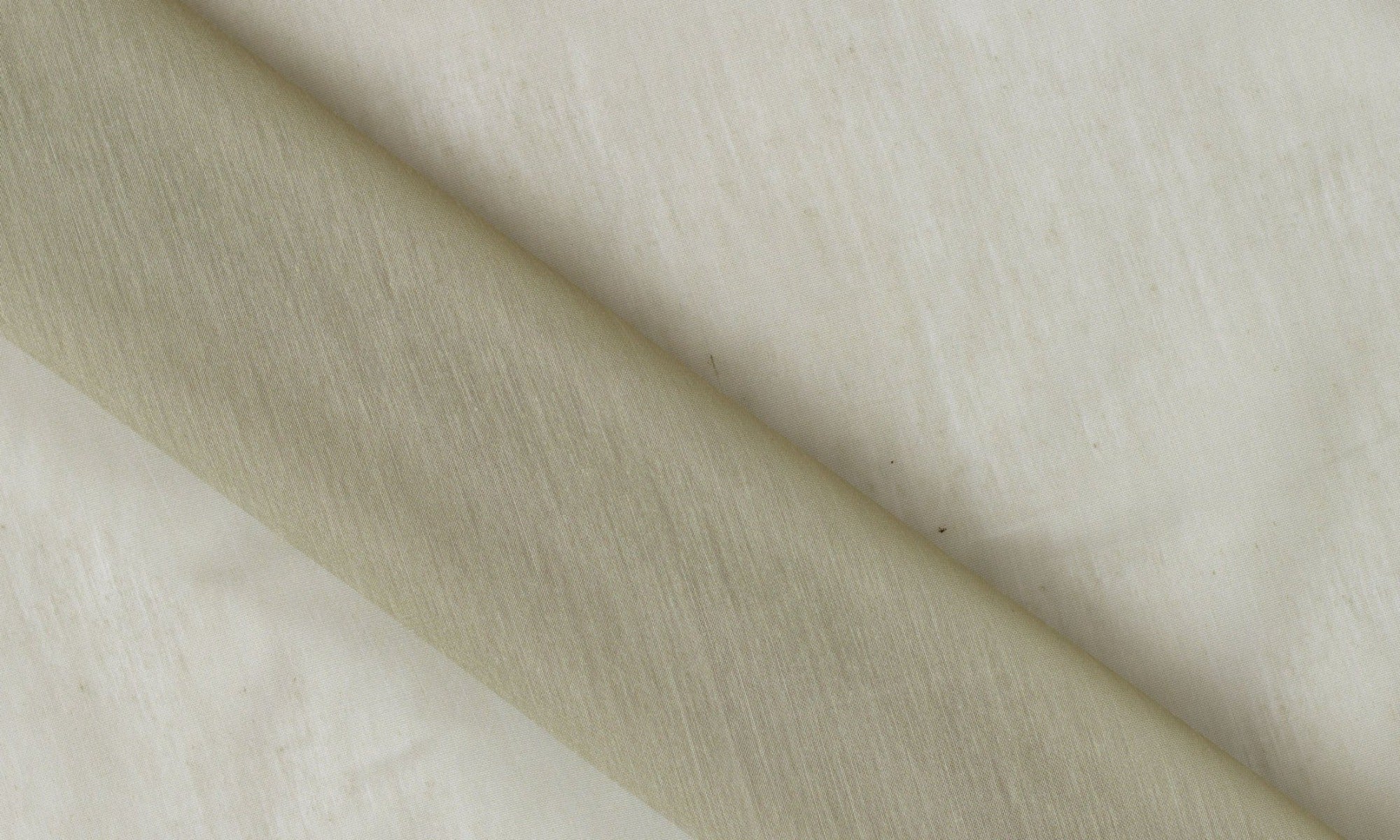
CHANDERI
Chanderi is a traditional ethnic fabric characterised by its lightweight, sheer texture and fine luxurious feel. Chanderi fabric is produced by weaving in silk and golden Zari in the traditional cotton yarn that results in the creation of the shimmering texture. The fabric borrowed its name from the small town Chanderi in Madhya Pradesh where traditional weavers practice the art of producing textured sarees in cotton and silk decorated with fine zari work.
The butis or motifs on Chanderi fabric are primarily hand woven on handloom, with the use of needles. Separate needles are used to create different motifs. Weavers coat these motifs with gold, silver as well as copper. Transparency or sheer texture is a unique feature of Chanderi fabric that differentiates it from other textiles produced across India.
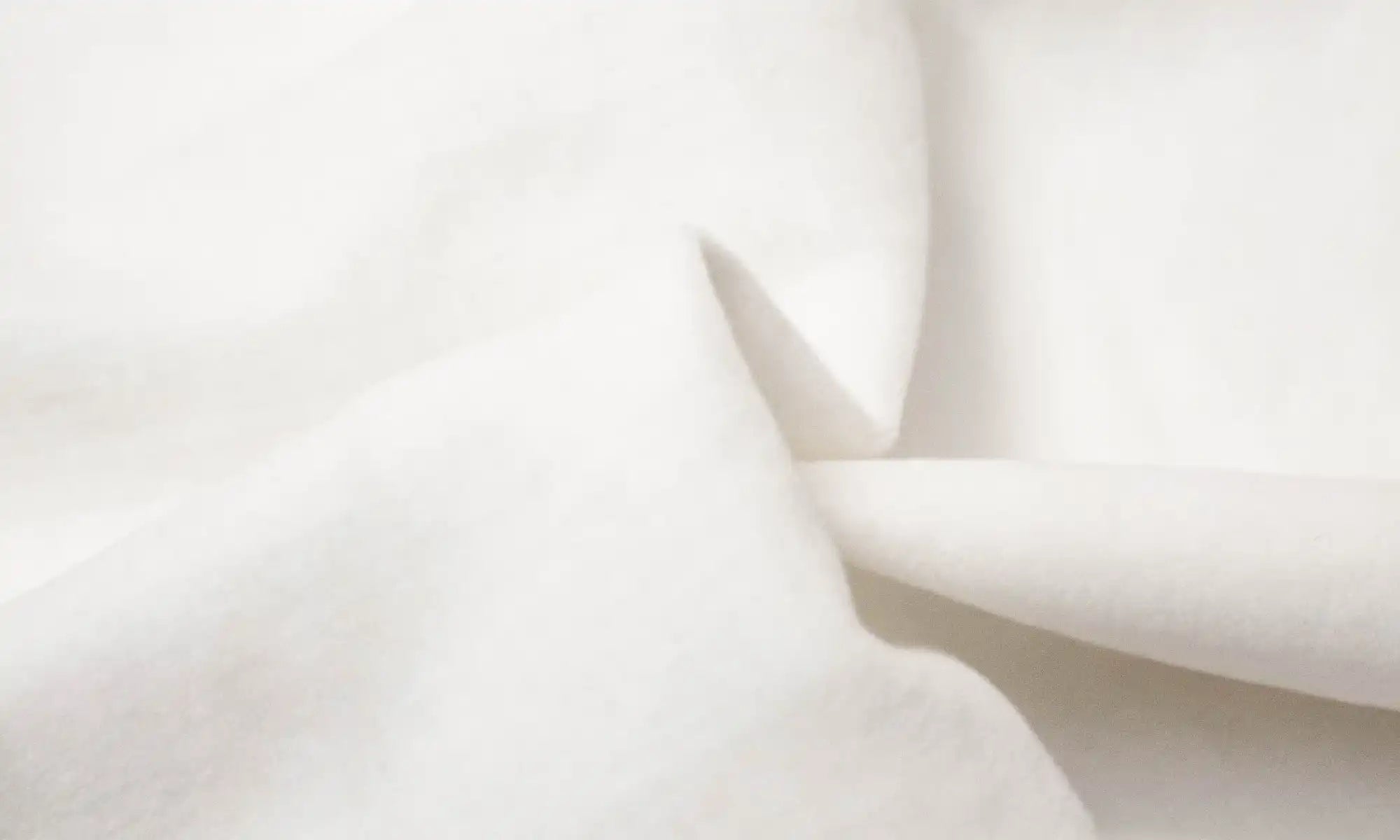
VELVET
Velvet is a closely woven fabric with a short, thick, plush pile. Velvet is softest when woven from natural fibers, especially cotton. Velvet is synonymous with softness and luxury, especially since it was originally made from silk. Velvet used to be an extremely expensive fabric to make, and thus solely reserved for royalty and nobility. It originated in Baghdad around the eighth century. Nowadays, there are several different kinds of velvet available depending on how the fabric is made and with what fiber. There is crushed velvet, panne and embossed velvet, stretch velvet (to which spandex has been added), and patterned velvet, in which the piles are cut to varying lengths. Velvet does not tend to wrinkle. Any ironing that may be required needs to be done on the back of the fabric, opposite the pile.
EMBROIDERIES
Embroidery, the art “painting with needle”, is the skill of decorating a cloth with needle work. It is the artistic use of needle and thread to create appealing designs.

CHIKANKARI
Chikankari embroidery, known as Shadow work by using herringbone stitch from the wrong side of the fabric, creates a shadow on the right side and at the same imparts an outline to the motif. Chikankari is the practice of stitching white untwisted yarn on fine fabrics like muslin, cotton or voile. It is an integral part of the life and culture of Lucknow “Nawabo ka sheher”. There are 5000 families involved in Chikankari embroidery in and around villages of Lucknow.
The embroidery involves about forty different stitches, with six basic ones on which the others are built. Each stitch has an individual name, involves a specific number of threads and has a specific use. To give the embroidery a rich look, additional embellishments like beads, mirror and sequins are also used.
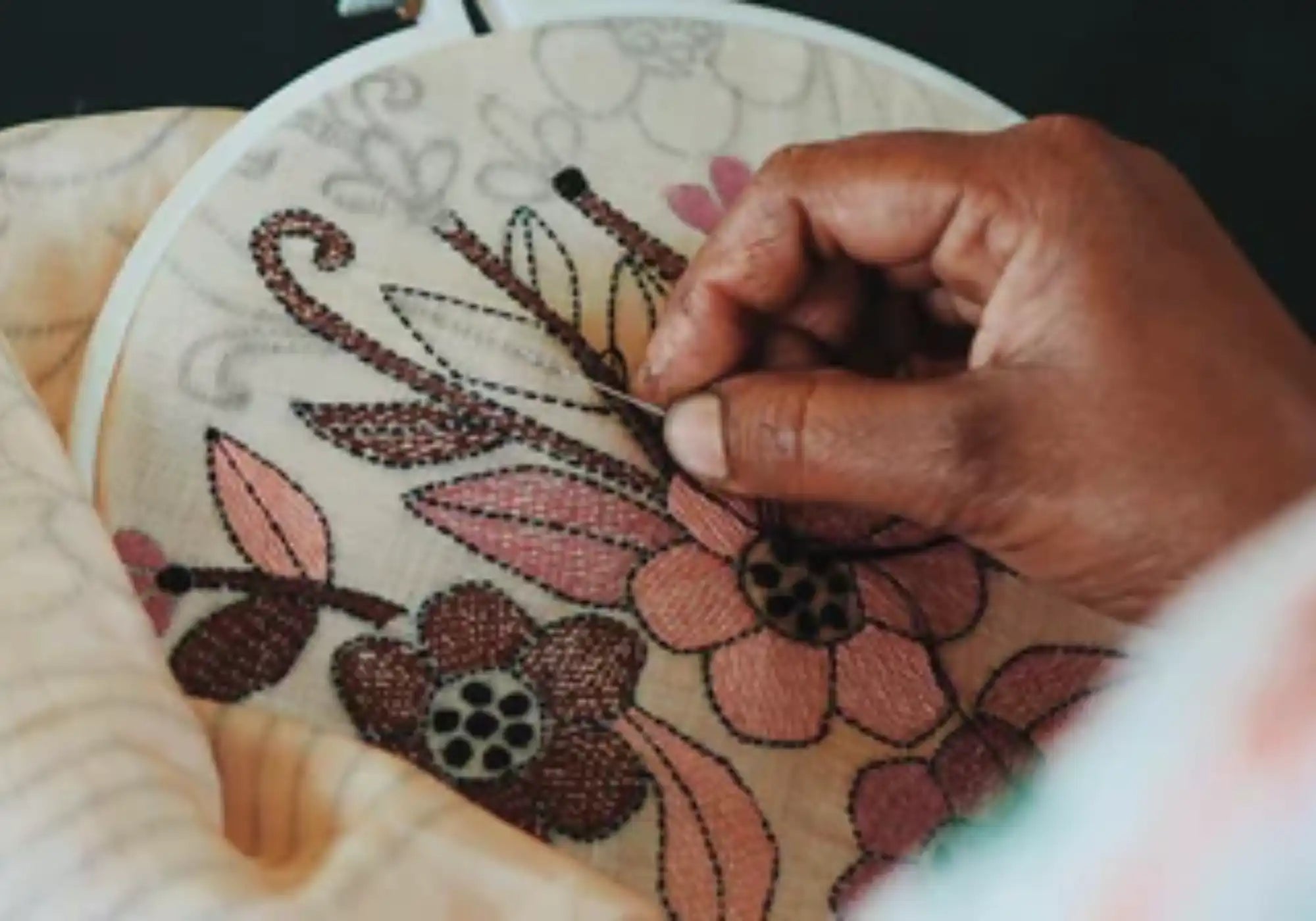
KANTHA
In modern usage, kantha more generally refers specifically to the type of stitch used. The earliest and most basic kantha stitch is a simple, straight, running stitch, like the type used on our Kantha Sari Scarves. Over time, more elaborate patterns developed, which became known as "nakshi kantha". Nakshi comes from the Bengali word, naksha, which refers to artistic patterns. Nakshi kantha is made up of motifs influenced by religion, culture and the lives of the women stitching
them.
Running kantha, which is a straight running stitch and the original and earliest form of kantha. Kantha fabrics originated in the homes of common folks of Bengal & is perhaps the simplest form of embroidery. And in spite of its simplicity has a rich and elegant look.
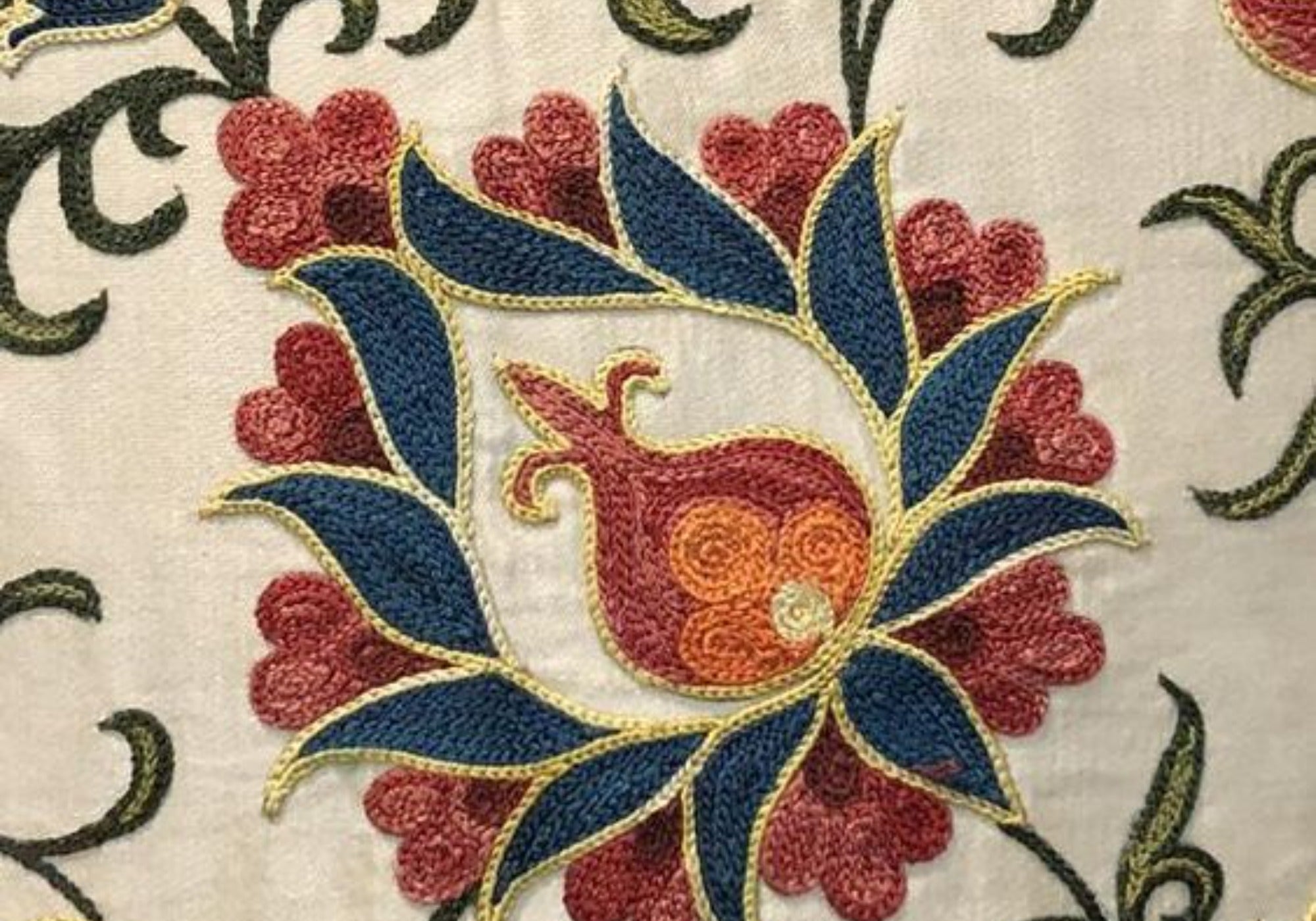
AARI EMBROIDERY
A pen like needle which resembles the shape of a crochet needle, gives rise to an intrinsic form of artwork called the ‘Aari work’. In this artwork beads and ‘muthia’, a sharp edged needle is put to work, which creatively gives rise to chain stitch kind of imprints. This work is popular for its delicate and finest threadwork which enhances the essence of hand embroidery. Aari work began with a simple procedure of using a lead pencil to sketch the design on the fabric, after which a needle was put to use which pierced holes along the lines of the design.
The fabric is first stretched over a frame to remove uneven, loose folds in the fabric texture. The frame comprises four wooden spars resting on wooden posts. Next, using thick cotton thread, the fabric is sewn on to the wooden frame. Zari, Cotton or Silk threads are used in embroidery.
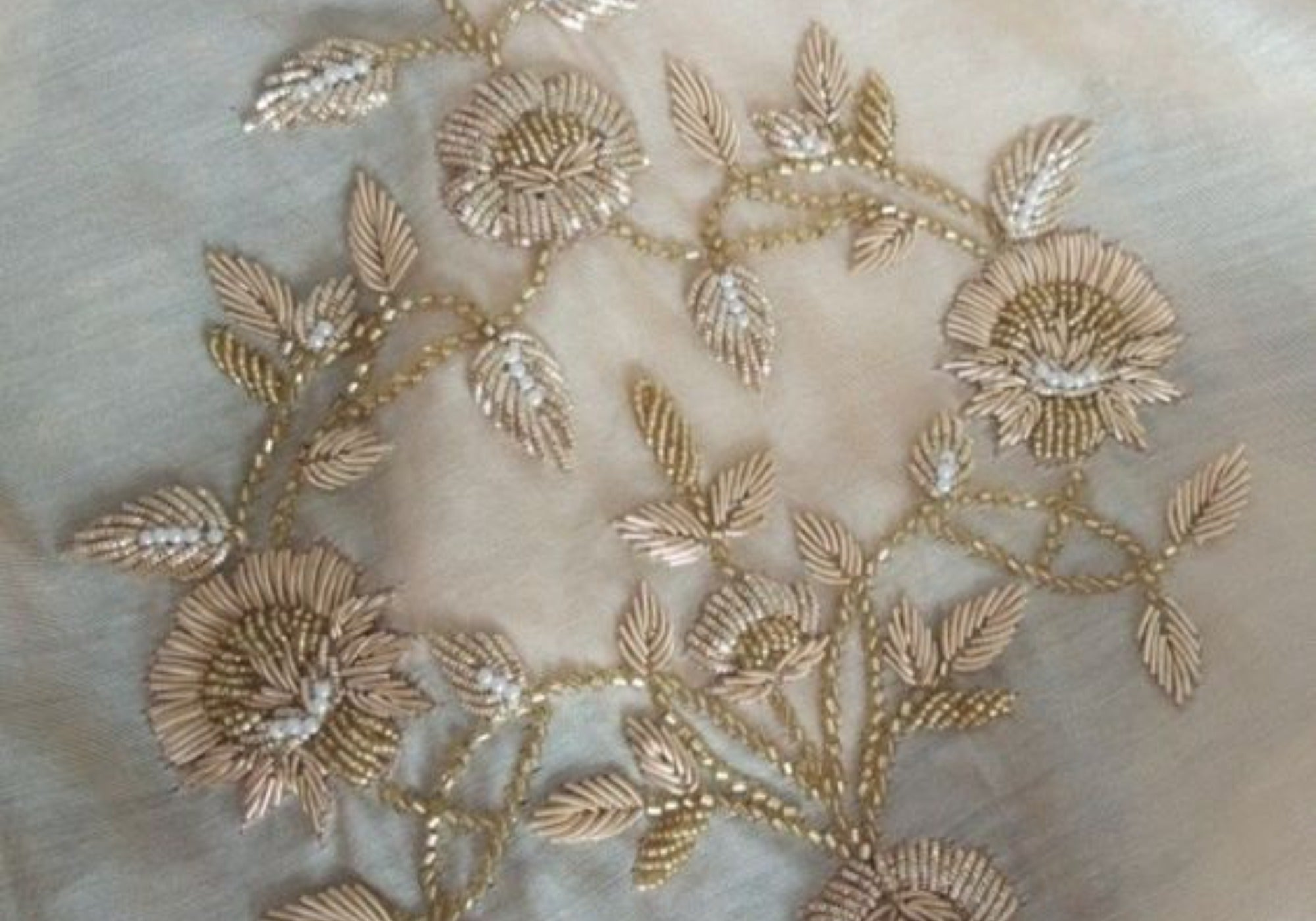
ZARDOZI WORK
Zardosi embroidery work is mainly a specialty of Lucknow, Bhopal, Hyderabad, Delhi, Agra, Kashmir, Mumbai, Ajmer and Chennai. The word 'Zardozi' is made up of two Persian terms, Zar meaning gold and Dozi meaning embroidery. The process of doing Zardozi embroidery starts with the craftsmen sitting cross-legged around the Adda, the wooden framework, with their tools. The second step in the process is to trace out the design on the cloth, if possible fabrics like silk, satin, velvet, etc. Needle is used to pull out each zardozi element and then, it is integrated into the basic design by pushing the needle into the fabric.
Zardozi embroidery is beautiful metal embroidery, which once used to embellish the attire of the Kings and the royals in India. Further adding to the magnificence of the work are the studded pearls and precious stones. Zardosi embroidery has been in existence in India from the time of the Rig Veda.
